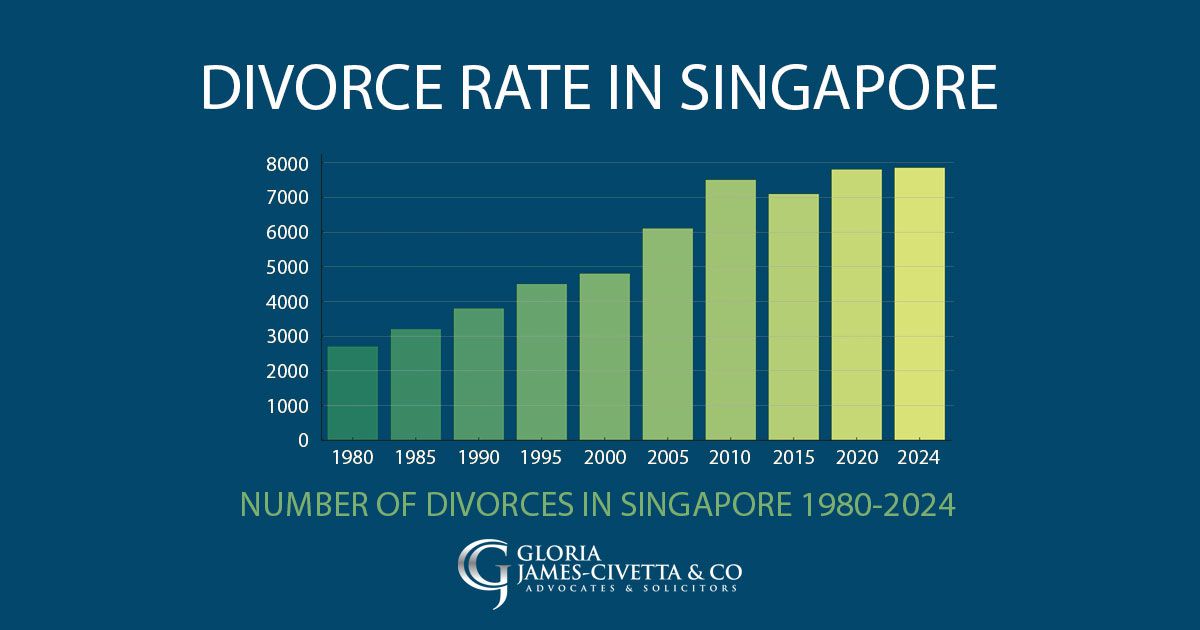
Every year, new statistics shed light on how marriage and divorce patterns are evolving in Singapore. These trends can reveal shifting societal norms, lifestyle choices, and the challenges couples face in maintaining long-term relationships.
The recently released 2024 figures from the Singapore Department of Statistics offer fresh insights into how Singaporeans are approaching marriage and separation today. In this article, we explore the latest numbers, how they compare with previous years, and what these trends might mean for individuals and families navigating these life transitions.
A Rise in Divorces After a Dip
In 2024, Singapore recorded 7,382 divorces and annulments—a 3.7% increase from 2023. While not a dramatic jump, this rise may reflect a return to pre-pandemic decision-making or a growing recognition of the legal avenues available to couples in difficult marriages.
Compared to the average yearly divorces between 2020 and 2024 (7,291), the 2024 figure is slightly above trend. However, it remains lower than the 2015–2019 average of 7,536, suggesting that overall, divorce rates have not yet rebounded to earlier levels.
Marriages Down—And Long-Term Stability Still a Concern
There were 26,328 marriages registered in 2024, marking a 7.0% decrease from 2023. This decline may reflect a combination of shifting priorities among younger Singaporeans, financial considerations, or changing attitudes toward marriage.
At the same time, long-term stability remains a concern. Of the couples who married in 2013, 14.4% had divorced before their 10th anniversary. This suggests that even among those who do marry, sustaining the relationship over time remains a challenge—highlighting the importance of legal clarity and planning throughout the course of a marriage.
Divorces Are Happening Later into the Marriage
Another important trend in 2024: divorces are occurring after longer marriages. The median duration of marriage before divorce rose to 11.1 years , up from 10.4 years in 2014. This reflects the reality that many couples are choosing to separate only after a significant period of marriage—often after raising children or facing midlife transitions.
Notably, couples married for 5 to 9 years accounted for the largest share (29%) of divorces in 2024. This timing suggests that issues may surface after the early years of adjustment, prompting separation during what is often seen as the “middle” phase of a marriage.
Shifts in Age and Divorce Dynamics
The median age at divorce stood at 40.9 years for women and 44.4 years for men, highlighting the continued trend of separations occurring later in life. This aligns with higher median marriage ages in 2024—29.6 years for women and 31.1 years for men, indicating that many are choosing to marry and, if necessary, divorce later than in past decades.
These shifts may reflect changes in career priorities, parenting timelines, or a greater willingness to address relationship dissatisfaction midlife.
What This Means for Individuals and Families
The data highlights that while fewer couples are entering marriage, a significant number are still choosing to part ways, often after many years together. This underscores the importance of early planning, open communication, and seeking legal information when considering major relationship decisions.
Whether dealing with complex financial matters, parenting responsibilities, or the emotional weight of separation, understanding your legal options early can make the process more manageable and less uncertain.
To Sum Up
Singapore’s latest marriage and divorce statistics offer more than just numbers, they reflect evolving choices, pressures, and life stages that many couples experience. While these trends provide useful context, every relationship is unique.
If you are thinking about separation or have questions about your rights, responsibilities, or next steps, our team at Gloria James-Civetta & Co is here to provide informed, practical guidance tailored to your circumstances.
Schedule a confidential consultation with one of our experienced divorce lawyers today. Let us help you understand your position and plan your way forward.


We’re here for you
Having met these considerations, our lawyers will then be able to assist you in taking the formal steps to file a writ of divorce with the Family Justice Court.
Our goal is to help you find a resolution that works for you.










